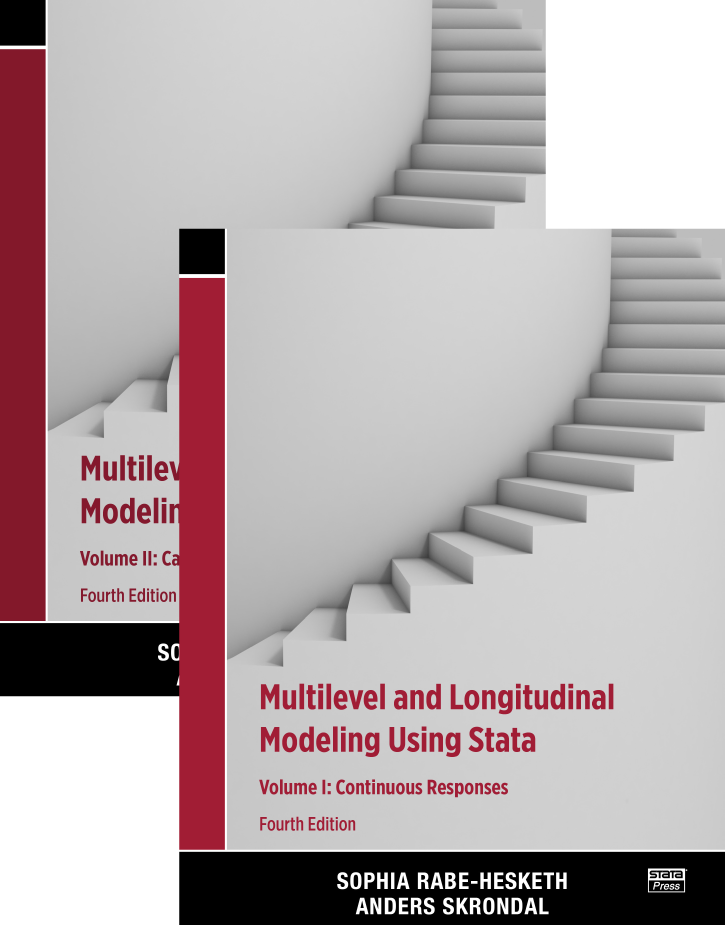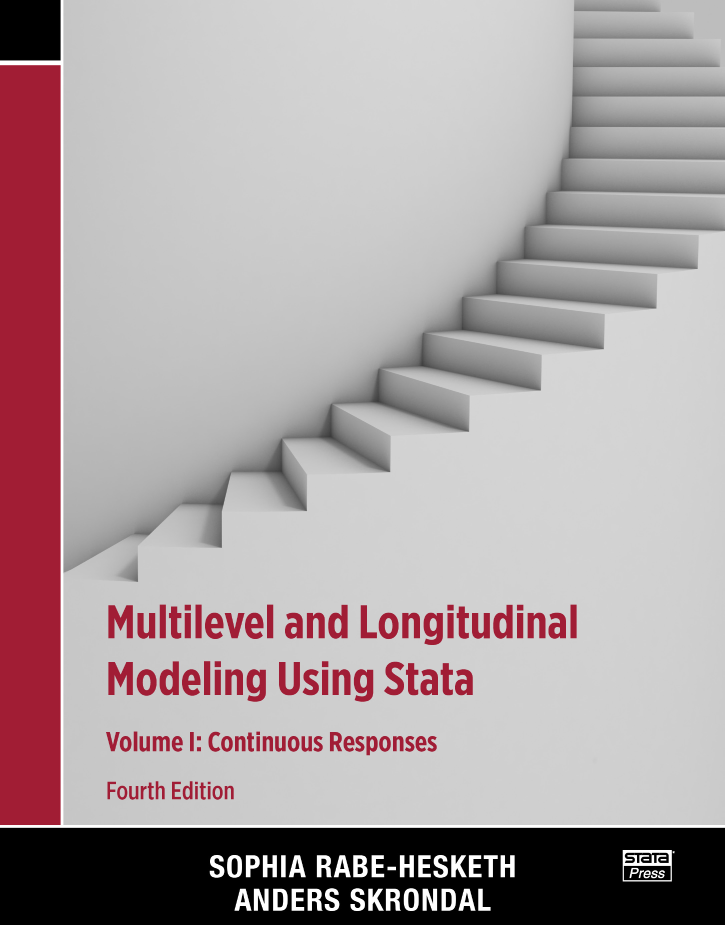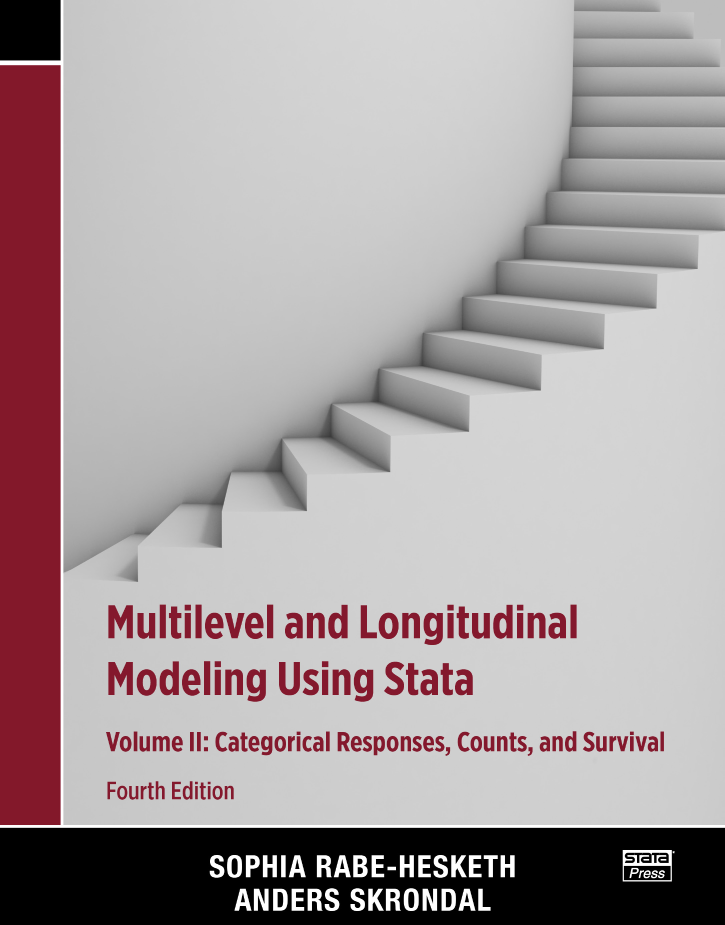List of tables
List of figures
List of displays
Multilevel and longitudinal models: When and why?
I Preliminaries
1 Review of linear regression
1.1 Introduction
1.2 Is there gender discrimination in faculty salaries?
1.3 Independent-samples t test
1.4 One-way analysis of variance
1.5 Simple linear regression
1.6 Dummy variables
1.7 Multiple linear regression
1.8 Interactions
1.9 Dummy variables for more than two groups
1.10 Other types of interactions
1.10.1 Interaction between dummy variables
1.10.2 Interaction between continuous covariates
1.11 Nonlinear effects
1.12 Residual diagnostics
1.13 Causal and noncausal interpretations of regression coefficients
1.13.1 Regression as conditional expectation
1.13.2 Regression as structural model
1.14 Summary and further reading
1.15 Exercises
II Two-level models
2 Variance-components models
2.1 Introduction
2.2 How reliable are peak-expiratory-flow measurements?
2.3 Inspecting within-subject dependence
2.4 The variance-components model
2.4.1 Model specification
2.4.2 Path diagram
2.4.3 Between-subject heterogeneity
2.4.4 Within-subject dependence
Intraclass correlation
Intraclass correlation versus Pearson correlation
2.5 Estimation using Stata
2.5.1 Data preparation: Reshaping from wide form to long form
2.5.2 Using xtreg
2.5.3 Using mixed
2.6 Hypothesis tests and confidence intervals
2.6.1 Hypothesis test and confidence interval for the population mean
2.6.2 Hypothesis test and confidence interval for the between-cluster variance
Likelihood-ratio test
Score test
F test
Confidence interval
2.7 Model as data-generating mechanism
2.8 Fixed versus random effects
2.9 Crossed versus nested effects
2.10 Parameter estimation
2.10.1 Model assumptions
Mean structure and covariance structure
Distributional assumptions
2.10.2 Different estimation methods
2.10.3 Inference for β
Estimate and standard error: Balanced case
Estimate: Unbalanced case
2.11 Assigning values to the random intercepts
2.11.1 Maximum “likelihood” estimation
Implementation via OLS regression
Implementation via the mean total residual
2.11.2 Empirical Bayes prediction
2.11.3 Empirical Bayes standard errors
Posterior and comparative standard errors
Diagnostic standard errors
Accounting for uncertainty in ˆβ
2.11.4 Bayesian interpretation of REML estimation and prediction
2.12 Summary and further reading
2.13 Exercises
3 Random-intercept models with covariates
3.1 Introduction
3.2 Does smoking during pregnancy affect birthweight?
3.2.1 Data structure and descriptive statistics
3.3 The linear random-intercept model with covariates
3.3.1 Model specification
3.3.2 Model assumptions
3.3.3 Mean structure
3.3.4 Residual covariance structure
3.3.5 Graphical illustration of random-intercept model
3.4 Estimation using Stata
3.4.1 Using xtreg
3.4.2 Using mixed
3.5 Coefficients of determination or variance explained
3.6 Hypothesis tests and confidence intervals
3.6.1 Hypothesis tests for individual regression coefficients
3.6.2 Joint hypothesis tests for several regression coefficients
3.6.3 Predicted means and confidence intervals
3.6.4 Hypothesis test for random-intercept variance
3.7 Between and within effects of level-1 covariates
3.7.1 Between-mother effects
3.7.2 Within-mother effects
3.7.3 Relations among estimators
3.7.4 Level-2 endogeneity and cluster-level confounding
3.7.5 Allowing for different within and between effects
3.7.6 Robust Hausman test
3.8 Fixed versus random effects revisited
3.9 Assigning values to random effects: Residual diagnostics
3.10 More on statistical inference
3.10.1 Overview of estimation methods
Pooled OLS
Feasible generalized least squares (FGLS)
ML by iterative GLS (IGLS)
ML by Newton–Raphson and Fisher scoring
ML by the expectation-maximization (EM) algorithm
REML
3.10.2 Consequences of using standard regression modeling for clustered data
Purely between-cluster covariate
Purely within-cluster covariate
3.10.3 Power and sample-size determination
Purely between-cluster covariate
Purely within-cluster covariate
3.11 Summary and further reading
3.12 Exercises
4 Random-coefficient models
4.1 Introduction
4.2 How effective are different schools?
4.3 Separate linear regressions for each school
4.4 Specification and interpretation of a random-coefficient model
4.4.1 Specification of a random-coefficient model
4.4.2 Interpretation of the random-effects variances and covariances
4.5 Estimation using mixed
4.5.1 Random-intercept model
4.5.2 Random-coefficient model
4.6 Testing the slope variance
4.7 Interpretation of estimates
4.8 Assigning values to the random intercepts and slopes
4.8.1 Maximum “likelihood” estimation
4.8.2 Empirical Bayes prediction
4.8.3 Model visualization
4.8.4 Residual diagnostics
4.8.5 Inferences for individual schools
4.9 Two-stage model formulation
4.10 Some warnings about random-coefficient models
4.10.1 Meaningful specification
4.10.2 Many random coefficients
4.10.3 Convergence problems
4.10.4 Lack of identification
4.11 Summary and further reading
4.12 Exercises
III Models for longitudinal and panel data
Introduction to models for longitudinal and panel data (part III)
5 Subject-specific effects and dynamic models
5.1 Introduction
5.2 Random-effects approach: No endogeneity
5.3 Fixed-effects approach: Level-2 endogeneity
5.3.1 De-meaning and subject dummies
De-meaning
Subject dummies
5.3.2 Hausman test
5.3.3 Mundlak approach and robust Hausman test
5.3.4 First-differencing
5.4 Difference-in-differences and repeated-measures ANOVA
5.4.1 Does raising the minimum wage reduce employment?
5.4.2 Repeated-measures ANOVA
5.5 Subject-specific coefficients
5.5.1 Random-coefficient model: No endogeneity
5.5.2 Fixed-coefficient model: Level-2 endogeneity
5.6 Hausman–Taylor: Level-2 endogeneity for level-1 and level-2 covariates
5.7 Instrumental-variable methods: Level-1 (and level-2) endogeneity
5.7.1 Do deterrents decrease crime rates?
5.7.2 Conventional fixed-effects approach
5.7.3 Fixed-effects IV estimator
5.7.4 Random-effects IV estimator
5.7.5 More Hausman tests
5.8 Dynamic models
5.8.1 Dynamic model without subject-specific intercepts
5.8.2 Dynamic model with subject-specific intercepts
5.9 Missing data and dropout
5.9.1 Maximum likelihood estimation under MAR: A simulation
5.9 Summary and further reading
5.10 Exercises
6 Marginal models
6.1 Introduction
6.2 Mean structure
6.3 Covariance structures
6.3.1 Unstructured covariance matrix
6.3.2 Random-intercept or compound symmetric/exchangeable structure
6.3.3 Random-coefficient structure
6.3.4 Autoregressive and exponential structures
6.3.5 Moving-average residual structure
6.3.6 Banded and Toeplitz structures
6.4 Hybrid and complex marginal models
6.4.1 Random effects and correlated level-1 residuals
6.4.2 Heteroskedastic level-1 residuals over occasions
6.4.3 Heteroskedastic level-1 residuals over groups
6.4.4 Different covariance matrices over groups
6.5 Comparing the fit of marginal models
6.6 Generalized estimating equations (GEE)
6.7 Marginal modeling with few units and many occasions
6.7.1 Is a highly organized labor market beneficial for economic growth?
6.7.2 Marginal modeling for long panels
6.7.3 Fitting marginal models for long panels in Stata
6.8 Summary and further reading
6.9 Exercises
7 Growth-curve models
7.1 Introduction
7.2 How do children grow?
7.2.1 Observed growth trajectories
7.3 Models for nonlinear growth
7.3.1 Polynomial models
Estimation using mixed
Predicting the mean trajectory
Predicting trajectories for individual children
7.3.2 Piecewise linear models
Estimation using mixed
Predicting the mean trajectory
7.4 Two-stage model formulation and cross-level interaction
7.5 Heteroskedasticity
7.5.1 Heteroskedasticity at level 1
7.5.2 Heteroskedasticity at level 2
7.6 How does reading improve from kindergarten through third grade?
7.7 Growth-curve model as a structural equation model
7.7.1 Estimation using sem
7.7.2 Estimation using mixed
7.8 Summary and further reading
7.9 Exercises
IV Models with nested and crossed random effects
8 Higher-level models with nested random effects
8.1 Introduction
8.2 Do peak-expiratory-flow measurements vary between methods within subjects?
8.3 Inspecting sources of variability
8.4 Three-level variance-components models
8.5 Different types of intraclass correlation
8.6 Estimation using mixed
8.7 Empirical Bayes prediction
8.8 Testing variance components
8.9 Crossed versus nested random effects revisited
8.10 Does nutrition affect cognitive development of Kenyan children?
8.11 Describing and plotting three-level data
8.11.1 Data structure and missing data
8.11.2 Level-1 variables
8.11.3 Level-2 variables
8.11.4 Level-3 variables
8.11.5 Plotting growth trajectories
8.12 Three-level random-intercept model
8.12.1 Model specification: Reduced form
8.12.2 Model specification: Three-stage formulation
8.12.3 Estimation using mixed
8.13 Three-level random-coefficient models
8.13.1 Random coefficient at the child level
Estimation using mixed
8.13.2 Random coefficient at the child and school levels
Estimation using mixed
8.14 Residual diagnostics and predictions
8.15 Summary and further reading
8.16 Exercises
9 Crossed random effects
9.1 Introduction
9.2 How does investment depend on expected profit and capital stock?
9.3 A two-way error-components model
9.3.1 Model specification
9.3.2 Residual variances, covariances, and intraclass correlations
Longitudinal correlations
Cross-sectional correlations
9.3.3 Estimation using mixed
9.3.4 Prediction
9.4 How much do primary and secondary schools affect attainment at age 16?
9.5 Data structure
9.6 Additive crossed random-effects model
9.6.1 Specification
9.6.2 Intraclass correlations
9.6.3 Estimation using mixed
9.7 Crossed random-effects model with random interaction
9.7.1 Model specification
9.7.2 Intraclass correlations
9.7.3 Estimation using mixed
9.7.4 Testing variance components
9.7.5 Some diagnostics
9.8 A trick requiring fewer random effects
9.9 Summary and further reading
9.10 Exercises
A Useful Stata commands
References
List of tables
List of figures
List of displays
V Models for categorical responses
10 Dichotomous or binary responses (PDF)
10.1 Introduction
10.2 Single-level logit and probit regression models for dichotomous responses
10.2.1 Generalized linear model formulation
Labor-participation data
Estimation using logit
Estimation using glm
10.2.2 Latent-response formulation
Logistic regression
Probit regression
Estimation using probit
10.3 Which treatment is best for toenail infection?
10.4 Longitudinal data structure
10.5 Proportions and fitted population-averaged or marginal probabilities
Estimation using logit
10.6 Random-intercept logistic regression
10.6.1 Model specification
Reduced-form specification
Two-stage formulation
10.6.2 Model assumptions
10.6.3 Estimation
Using xtlogit
Using melogit
Using gllamm
10.7 Subject-specific or conditional versus population-averaged or marginal relationships
10.8 Measures of dependence and heterogeneity
10.8.1 Conditional or residual intraclass correlation of the latent responses
10.8.2 Median odds ratio
10.8.3 Measures of association for observed responses at median fixed part of the model
10.9 Inference for random-intercept logistic models
10.9.1 Tests and confidence intervals for odds ratios
10.9.2 Tests of variance components
10.10 Maximum likelihood estimation
10.10.1 Adaptive quadrature
10.10.2 Some speed and accuracy considerations
Integration methods and number of quadrature points
Starting values
Using melogit and gllamm for collapsible data
Spherical quadrature in gllamm
10.11 Assigning values to random effects
10.11.1 Maximum “likelihood” estimation
10.11.2 Empirical Bayes prediction
10.11.3 Empirical Bayes modal prediction
10.12 Different kinds of predicted probabilities
10.12.1 Predicted population-averaged or marginal probabilities
10.12.2 Predicted subject-specific probabilities
Predictions for hypothetical subjects: Conditional probabilities
Predictions for the subjects in the sample: Posterior mean probabilities
10.13 Other approaches to clustered dichotomous data
10.13.1 Conditional logistic regression
Estimation using clogit
10.13.2 Generalized estimating equations (GEE)
Estimation using xtgee
10.14 Summary and further reading
10.15 Exercises
11 Ordinal responses
11.1 Introduction
11.2 Single-level cumulative models for ordinal responses
11.2.1 Generalized linear model formulation
11.2.2 Latent-response formulation
11.2.3 Proportional odds
11.2.4 Identification
11.3 Are antipsychotic drugs effective for patients with schizophrenia?
11.4 Longitudinal data structure and graphs
11.4.1 Longitudinal data structure
11.4.2 Plotting cumulative proportions
11.4.3 Plotting cumulative sample logits and transforming the time scale
11.5 Single-level proportional-odds model
11.5.1 Model specification
Estimation using ologit
11.6 Random-intercept proportional-odds model
11.6.1 Model specification
Estimation using meologit
Estimation using gllamm
11.6.2 Measures of dependence and heterogeneity
Residual intraclass correlation of latent responses
Median odds ratio
11.7 Random-coefficient proportional-odds model
11.7.1 Model specification
Estimation using meologit
Estimation using gllamm
11.8 Different kinds of predicted probabilities
11.8.1 Predicted population-averaged or marginal probabilities
11.8.2 Predicted subject-specific probabilities: Posterior mean
11.9 Do experts differ in their grading of student essays?
11.10 A random-intercept probit model with grader bias
11.10.1 Model specification
Estimation using gllamm
11.11 Including grader-specific measurement-error variances
11.11.1 Model specification
Estimation using gllamm
11.12 Including grader-specific thresholds
11.12.1 Model specification
Estimation using gllamm
11.13 Other link functions
Cumulative complementary log–log model
Continuation-ratio logit model
Adjacent-category logit model
Baseline-category logit and stereotype models
11.14 Summary and further reading
11.15 Exercises
12 Nominal responses and discrete choice
12.1 Introduction
12.2 Single-level models for nominal responses
12.2.1 Multinomial logit models
Transport data version 1
Estimation using mlogit
12.2.2 Conditional logit models with alternative-specific covariates
Transport data version 2: Expanded form
Estimation using clogit
Estimation using cmclogit
12.2.3 Conditional logit models with alternative- and unit-specific covariates
Estimation using clogit
Estimation using cmclogit
12.3 Independence from irrelevant alternatives
12.4 Utility-maximization formulation
12.5 Does marketing affect choice of yogurt?
12.6 Single-level conditional logit models
12.6.1 Conditional logit models with alternative-specific intercepts
Estimation using clogit
Estimation using cmclogit
12.7 Multilevel conditional logit models
12.7.1 Preference heterogeneity: Brand-specific random intercepts
Estimation using cmxtmixlogit
Estimation using gllamm
12.7.2 Response heterogeneity: Marketing variables with random coefficients
Estimation using cmxtmixlogit
Estimation using gllamm
12.7.3 Preference and response heterogeneity
Estimation using cmxtmixlogit
Estimation using gllamm
12.8 Prediction of marginal choice probabilities
12.9 Prediction of random effects and household-specific choice probabilities
12.10 Summary and further reading
12.11 Exercises
VI Models for counts
13 Counts
13.1 Introduction
13.2 What are counts?
13.2.1 Counts versus proportions
13.2.2 Counts as aggregated event-history data
13.3 Single-level Poisson models for counts
13.4 Did the German healthcare reform reduce the number of doctor visits?
13.5 Longitudinal data structure
13.6 Single-level Poisson regression
13.6.1 Model specification
Estimation using poisson
Estimation using glm
13.7 Random-intercept Poisson regression
13.7.1 Model specification
13.7.2 Measures of dependence and heterogeneity
13.7.3 Estimation
Using xtpoisson
Using mepoisson
Using gllamm
13.8 Random-coefficient Poisson regression
13.8.1 Model specification
Estimation using mepoisson
Estimation using gllamm
13.9 Overdispersion in single-level models
13.9.1 Normally distributed random intercept
Estimation using xtpoisson
13.9.2 Negative binomial models
Mean dispersion or NB2
Constant dispersion or NB1
13.9.3 Quasilikelihood
Estimation using glm
13.10 Level-1 overdispersion in two-level models
13.10.1 Random-intercept Poisson model with robust standard errors
Estimation using mepoisson
13.10.2 Three-level random-intercept model
13.10.3 Negative binomial models with random intercepts
Estimation using menbreg
13.10.4 The HHG model
13.11 Other approaches to two-level count data
13.11.1 Conditional Poisson regression
Estimation using xtpoisson, fe
Estimation using Poisson regression with dummy variables for clusters
13.11.2 Conditional negative binomial regression
13.11.3 Generalized estimating equations
Estimation using xtgee
13.12 Marginal and conditional effects when responses are MAR
Simulation
13.13 Which Scottish counties have a high risk of lip cancer?
13.14 Standardized mortality ratios
13.15 Random-intercept Poisson regression
13.15.1 Model specification
Estimation using gllamm
13.15.2 Prediction of standardized mortality ratios
13.16 Nonparametric maximum likelihood estimation
13.16.1 Specification
Estimation using gllamm
13.16.2 Prediction
13.17 Summary and further reading
13.18 Exercises
VII Models for survival or duration data
Introduction to models for survival or duration data (part VII)
14 Discrete-time survival
14.1 Introduction
14.2 Single-level models for discrete-time survival data
14.2.1 Discrete-time hazard and discrete-time survival
Promotions data
14.2.2 Data expansion for discrete-time survival analysis
14.2.3 Estimation via regression models for dichotomous responses
Estimation using logit
14.2.4 Including time-constant covariates
Estimation using logit
14.2.5 Including time-varying covariates
Estimation using logit
14.2.6 Multiple absorbing events and competing risks
Estimation using mlogit
14.2.7 Handling left-truncated data
14.3 How does mother's birth history affect child mortality?
14.4 Data expansion
14.5 Proportional hazards and interval-censoring
14.6 Complementary log–log models
14.6.1 Marginal baseline hazard
Estimation using cloglog
14.6.2 Including covariates
Estimation using cloglog
14.7 Random-intercept complementary log-log model
14.7.1 Model specification
Estimation using mecloglog
14.8 Population-averaged or marginal vs. cluster-specific or conditional
survival probabilities
14.9 Summary and further reading
14.10 Exercises
15 Continuous-time survival
15.1 Introduction
15.2 What makes marriages fail?
15.3 Hazards and survival
15.4 Proportional hazards models
15.4.1 Piecewise exponential model
Estimation using streg
Estimation using poisson
15.4.2 Cox regression model
Estimation using stcox
15.4.3 Cox regression via Poisson regression for expanded data
Estimation using xtpoisson, fe
15.4.4 Approximate Cox regression: Poisson regression, smooth baseline hazard
Estimation using poisson
15.5 Accelerated failure-time models
15.5.1 Log-normal model
Estimation using streg
Estimation using stintreg
15.6 Time-varying covariates
Estimation using streg
15.7 Does nitrate reduce the risk of angina pectoris?
15.8 Marginal modeling
15.8.1 Cox regression with occasion-specific dummy variables
Estimation using stcox
15.8.2 Cox regression with occasion-specific baseline hazards
Estimation using stcox, strata
15.8.3 Approximate Cox regression
Estimation using poisson
15.9 Multilevel proportional hazards models
15.9.1 Cox regression with gamma shared frailty
Estimation using stcox, shared
15.9.2 Approximate Cox regression with log-normal shared frailty
Estimation using mepoisson
15.9.3 Approximate Cox regression with normal random intercept and coefficient
Estimation using mepoisson
15.10 Multilevel accelerated failure-time models
15.10.1 Log-normal model with gamma shared frailty
Estimation using streg
15.10.2 Log-normal model with log-normal shared frailty
Estimation using mestreg
15.10.3 Log-normal model with normal random intercept and random coefficient
Estimation using mestreg
15.11 Fixed-effects approach
15.11.1 Stratified Cox regression with subject-specific baseline hazards
Estimation using stcox, strata
15.12 Different approaches to recurrent-event data
15.12.1 Total time risk interval
15.12.2 Counting process risk interval
15.12.3 Gap-time risk interval
15.13 Summary and further reading
15.14 Exercises
VIII Models with nested and crossed random effects
16 Models with nested and crossed random effects
16.1 Introduction
16.2 Did the Guatemalan-immunization campaign work?
16.3 A three-level random-intercept logistic regression model
16.3.1 Model specification
16.3.2 Measures of dependence and heterogeneity
Types of residual intraclass correlations of the latent responses
Types of median odds ratios
16.3.3 Three-stage formulation
16.3.4 Estimation
Using melogit
Using gllamm
16.4 A three-level random-coefficient logistic regression model
16.4.1 Estimation
Using melogit
Using gllamm
16.5 Prediction of random effects
16.5.1 Empirical Bayes prediction
16.5.2 Empirical Bayes modal prediction
16.6 Different kinds of predicted probabilities
16.6.1 Predicted population-averaged or marginal probabilities: New clusters
16.6.2 Predicted median or conditional probabilities
16.6.3 Predicted posterior mean probabilities: Existing clusters
16.7 Do salamanders from different populations mate successfully
16.8 Crossed random-effects logistic regression
16.8.1 Setup for estimating crossed random-effects model using melogit
16.8.2 Approximate maximum likelihood estimation
Estimation using melogit
16.8.3 Bayesian estimation
Brief introduction to Bayesian inference
Priors for the salamander data
Estimation using bayes: melogit
16.8.4 Estimates compared
16.8.5 Fully Bayesian versus empirical Bayesian inference for random effects
16.9 Summary and further reading
16.10 Exercises
A Syntax for gllamm, eq, and gllapred: The bare essentials
B Syntax for gllamm
C Syntax for gllapred
D Syntax for gllasim
References



